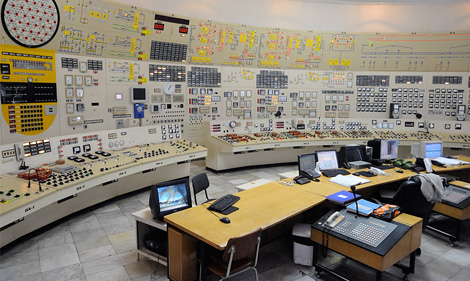

Supervisory Control and Data Acquisition (SCADA) Water and Wastewater Applications

Supervisory Control and Data Acquisition (SCADA) is a computer-based program used to supervise, control, and monitor industrial and public water production and process operations. It has revolutionized the water/wastewater industry by giving operators and managers the ability to operate many points of control from a central location. Time-consuming “legwork” is reduced and constant vigil can be maintained of extended operation and control.
Let’s discuss the uses of the various parts of the SCADA acronym that the operator will use.
Supervisory (S):
This is the “S” in SCADA. The operator can supervise and monitor devices and instruments in the immediate area or over extended distances. Far flung devices such as raw water supply pumps, sewage pumps, flow meters, flow set points, history and trends, chemical operations, online monitoring of water and wastewater parameters, filter operation, storage tank levels and trends, and most anything imaginable can be incorporated, if input is provided. Sensors are required for operation input and actuators to enable the operator to control the equipment monitored.
Control (C):
Control or “C” enables the operator to change the operations of previously mentioned devices by use of actuators that accept commands from the computer that the operator implements. Chief examples involve water flow rates, chemical feed rates, starting and stopping equipment, controlling facility utilities, or, once again, any device upon which a reliable sensor and actuator can be fitted. Operators can perform most of the required tasks in facility operation from the computer terminal without physical effort. However, even with very robust systems, some direct attention will be required.
Data Acquisition (D and A):
Data Acquisition or “DA” is especially important for documentation and records. It can be said that much of the data acquired originates in the supervisory area. Totalizing daily data, such as flow rates, flow meter inputs, tank levels, and chemical consumption, are extremely helpful. Chemical consumption is usually expressed in weight and will require reliable scales and sensors to deliver good data.
Trust in the system is very important. There are some operations in which local authorities will require manual monitoring and control. There is also the issue of system failure. Qualified people will have to correct failures and operators will need to be fully trained on how to use direct manual operations to counter any SCADA failures. SCADA is the operator’s servant and must not be allowed to become the master in the mind of the operator. It is clear that electronic devices are not foolproof, and staff may have to revert to the “old days” to maintain proper operations.
SCADA systems must be developed by those familiar with water and wastewater operations. The IT (Information Technology) firm must produce the necessary resume and credentials, along with references, dealing with water and wastewater operations. Horror stories abound about unworkable systems that must be corrected, taking more time to complete. In some cases, the warranty on the work is not worth the paper it’s printed on.
It is best to deal with an experienced facility operator/engineer to oversee the development of a new or renovated SCADA. Your consultant’s complete knowledge of daily facility operations will aid in avoiding pitfalls. The consultant can aid in finding a good firm or set up a reputable list of bidders for the project. The bid specifications should contain a strong requirement that the IT firm be experienced in developing water utility software and hardware.
In summary, a good and reliable system is an operator’s dream and can increase productivity.